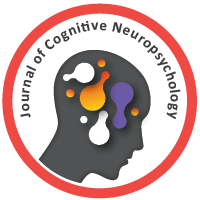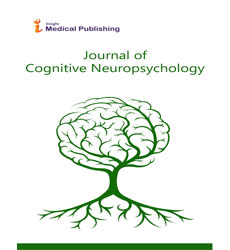Neural Mechanisms of Attention Control: Insights from Cognitive Neuropsychology
*Corresponding author:
Nozari Black,
Department of Psychology, Neapolis University, Pafos, Cyprus;
E-mail: black.nozari@neapolis.cy
Received date: January 02, 2025, Manuscript No. ipcn-25-20475; Editor assigned date: January 04, 2025, PreQC No. ipcn-25-20475 (PQ); Reviewed date: January 16, 2025, QC No. ipcn-25-20475; Revised date: January 23, 2025, Manuscript No. ipcn-25-20475 (R); Published date: January 30, 2025, DOI: 10.36648/IPCN.9.1.001
Citation: Nozari B (2025) Neural Mechanisms of Attention Control: Insights from Cognitive Neuropsychology. J Cogntv Neuropsych Vol: 9 No: 1.1
Introduction
Attention control is a fundamental cognitive process that enables humans to selectively focus on relevant stimuli while filtering out distractions. This ability underpins higher-order cognition, including memory, problem-solving, and learning. Cognitive neuropsychology, through studies of patients with brain lesions, neuroimaging, and experimental paradigms, has provided vital insights into how the brain regulates attention. By linking cognitive models of attention with neurobiological mechanisms, researchers have been able to clarify the distinct networks and neural substrates that support different forms of attentional control [1].
Description
Cognitive models such as Posnerâ??s attention network theory describe attention as comprising three systems: alerting, orienting, and executive control. Neuropsychological studies of stroke and traumatic brain injury patients support these distinctions, showing that damage to specific regions disrupts particular aspects of attention. For example, lesions in the parietal lobe often result in hemispatial neglect, highlighting its role in orienting attention. Similarly, prefrontal cortex damage impairs executive control, leading to difficulty in suppressing irrelevant stimuli or maintaining task goals. These clinical observations provide compelling evidence that attention is not a unitary function but rather interplay of specialized systems [2].
Advances in neuroimaging have mapped distinct brain networks responsible for attention. The Dorsal Attention Network (DAN), involving the intraparietal sulcus and frontal eye fields, mediates top-down, goal-directed attention, while the Ventral Attention Network (VAN), centered on the temporoparietal junction and ventral frontal cortex, supports stimulus-driven reorienting. Cognitive neuropsychology confirms these findings, as patients with right hemisphere damage frequently exhibit difficulties in reorienting attention, underscoring the VANâ??s importance. Moreover, subcortical structures such as the thalamus and superior colliculus contribute by modulating attentional shifts and sensory gating. Disruption of attentional mechanisms is a hallmark of many neurological and psychiatric conditions. In attention-deficit/hyperactivity disorder (ADHD), neuropsychological assessments reveal impairments in executive control linked to dysfunction of the prefrontal cortex and basal ganglia circuits. Similarly, patients with Alzheimerâ??s disease show deficits in selective and divided attention due to progressive degeneration of cortical networks. Post-stroke patients with neglect syndromes offer further insights into how localized brain damage produces profound attentional impairments. These clinical cases not only deepen our understanding of neural mechanisms but also guide the development of cognitive rehabilitation strategies [3].
Cognitive neuropsychology has practical implications for designing interventions to improve attentional control. Techniques such as computerized attention training, non-invasive brain stimulation, and mindfulness-based therapies are being explored to strengthen attentional networks. Future research is likely to integrate neuropsychological data with computational modeling and connectome-based approaches to understand dynamic interactions across large-scale brain networks. This integration may eventually pave the way for personalized interventions tailored to individual patientsâ?? neural profiles. Future research in the cognitive neuropsychology of attention control is moving toward more integrative and technology-driven approaches. One promising direction is the use of connectomics and network neuroscience to map how large-scale brain networks dynamically interact during attention-demanding tasks. Combining lesion studies with functional connectivity analyses may clarify how disruptions in one network propagate to others, explaining the variability seen in attentional deficits across patients. Another frontier is the application of artificial intelligence and computational modeling to simulate attentional processes and predict the impact of brain damage. Clinically, future studies are likely to focus on personalized rehabilitation strategies, using biomarkers from neuroimaging or electrophysiology to tailor cognitive training and neuromodulation therapies to individual patients. Additionally, advances in neurotechnologies such as real-time fMRI neurofeedback and transcranial magnetic stimulation hold promise for directly enhancing attentional control. Finally, cross-disciplinary collaborations between cognitive neuropsychology, psychiatry, and neuroengineering are expected to refine our understanding of attention across both health and disease, bridging basic science and clinical application [4,5].
Conclusion
The study of attention control through cognitive neuropsychology has revealed a complex interplay of cortical and subcortical networks that enable humans to focus, shift, and sustain attention. Evidence from lesion studies, neuroimaging, and clinical disorders underscores the distinct but interconnected systems that govern attentional processes. Beyond advancing theoretical knowledge, these insights have profound clinical significance, guiding diagnosis, treatment, and rehabilitation in conditions marked by attentional dysfunction. As research continues to evolve, cognitive neuropsychology remains a vital bridge between brain mechanisms and cognitive function, offering deeper understanding of one of the brainâ??s capacities.
Acknowledgment
None.
Conflict of Interest
None.
References
- Yeo XY, Cunliffe G, Ho RC, Lee SS, Jung S (2022). Potentials of neuropeptides as therapeutic agents for neurological diseases. Biomedicines 10: 343.
Google Scholar Cross Ref Indexed at
- Levy I, Schiller D (2021). Neural computations of threat. Trends Cogn Sci 25: 151-171.
Google Scholar Cross Ref Indexed at
- Bielsky IF, Young LJ (2004). Oxytocin, vasopressin and social recognition in mammals. Peptides 25: 1565-1574.
Google Scholar Cross Ref Indexed at
- Szczepanska-Sadowska E, Zera T, Sosnowski P, Cudnoch-Jedrzejewska A, Puszko A, et al. (2017). Vasopressin and related peptides; potential value in diagnosis, prognosis and treatment of clinical disorders. Curr Drug Metab 18: 306-345.
Google Scholar Cross Ref Indexed at
- Ring RH (2005). The central vasopressinergic system: examining the opportunities for psychiatric drug development. Curr Pharm Des 11: 205-225.

Open Access Journals
- Aquaculture & Veterinary Science
- Chemistry & Chemical Sciences
- Clinical Sciences
- Engineering
- General Science
- Genetics & Molecular Biology
- Health Care & Nursing
- Immunology & Microbiology
- Materials Science
- Mathematics & Physics
- Medical Sciences
- Neurology & Psychiatry
- Oncology & Cancer Science
- Pharmaceutical Sciences
